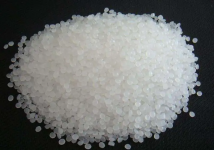read: 740 time:2025-06-09 15:04:05 from:化易天下
The Finkelstein reaction, a classic nucleophilic substitution reaction, is widely used in organic synthesis to exchange halogens in alkyl halides. One common question that arises is "why dry acetone is used in the Finkelstein reaction?" This article delves into the specifics, providing a thorough analysis of the reasons behind the use of dry acetone in this crucial chemical reaction.
The solvent plays a critical role in the Finkelstein reaction, directly impacting the reaction's rate and yield. In this reaction, an alkyl halide (often a chloride or bromide) is treated with a sodium halide (such as sodium iodide). The success of this substitution largely depends on the solvent's ability to dissolve the reagents and facilitate the ion exchange. Acetone is chosen as the solvent because of its polar aprotic nature, which stabilizes the ions and speeds up the reaction.
Why dry acetone is used in the Finkelstein reaction becomes clearer when we consider the nature of the reagents involved. Acetone is highly polar and aprotic, meaning it does not donate hydrogen bonds and therefore does not stabilize nucleophiles through hydrogen bonding. This property is essential for the reaction, as it allows the sodium halide (such as sodium iodide) to remain dissociated in solution, maximizing the availability of the nucleophile for the substitution reaction.
However, if water is present in the acetone, it can lead to the formation of hydroxide ions (OH-), which are highly nucleophilic and can compete with the halide ions. This side reaction would reduce the efficiency of the Finkelstein reaction, leading to lower yields. Hence, dry acetone is used to avoid any moisture that could interfere with the reaction process.
Water acts as a competing nucleophile in the Finkelstein reaction. If water were present, it could initiate side reactions, leading to the formation of unwanted by-products like alcohols, which result from the nucleophilic substitution of hydroxide ions with alkyl halides. Additionally, water can facilitate the reverse reaction, where the newly formed alkyl halide reverts to the original halide, thus reducing the overall yield.
Using dry acetone ensures that the reaction environment is strictly anhydrous, preventing any side reactions and allowing the halide exchange to proceed efficiently. The lack of water enhances the solubility of the sodium halide in acetone, promoting the formation of a soluble ion pair that is crucial for the reaction to proceed at a faster rate.
In summary, why dry acetone is used in the Finkelstein reaction is rooted in the need to maintain an anhydrous environment to avoid side reactions and ensure a high reaction yield. Dry acetone, with its polar aprotic properties, provides the ideal solvent conditions for the nucleophilic substitution to occur efficiently. By eliminating water from the reaction mixture, chemists can ensure that the sodium halide remains dissociated and ready to participate in the halide exchange, leading to a successful Finkelstein reaction.

Jincheng Petrochemical's 300000 ton polypropylene plant successfully trial production, 2024 polypropylene market analysis

The ABS market remains sluggish, what is the future direction?

Market differentiation of bisphenol A intensifies: prices rise in East China, while prices generally decline in other regions

The production method and process flow of silicone acrylic lotion, and what are the common raw materials